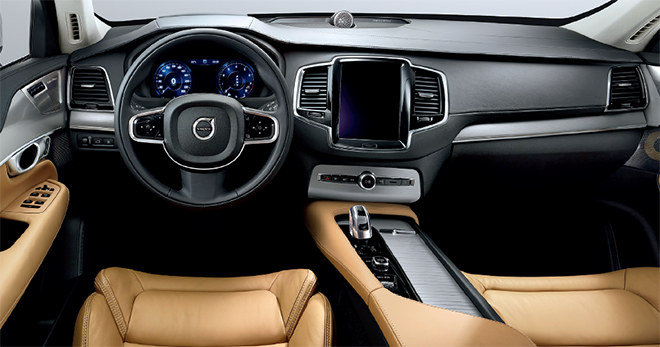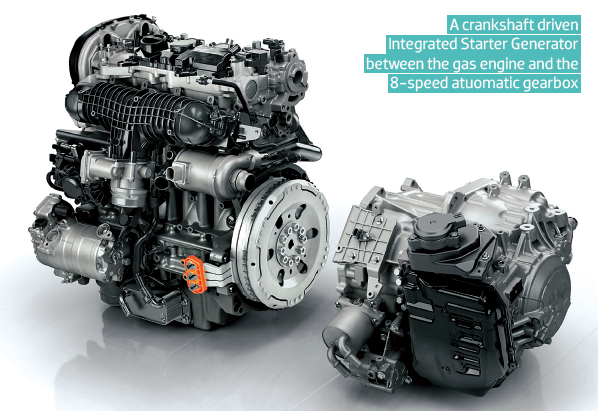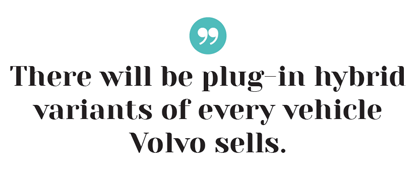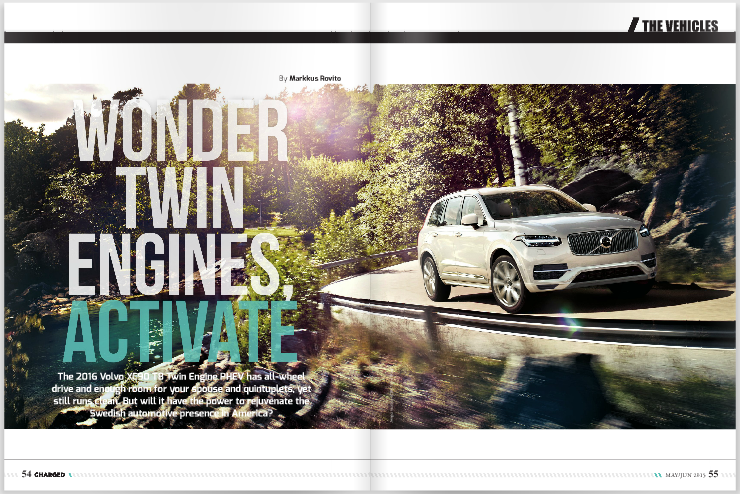These days when most Americans think of Swedish engineering, they probably remember a frustrating experience with an Allen wrench and one too few pieces of particle board. But we didn’t always buy our Swedish creations under the same roof as our Swedish meatballs. Any American old enough to drink remembers a friend whose parents drove an oddly shaped but somewhat prestigious Saab or Volvo, the two noted Swedish automakers both known for their emphasis on safety measures.
Much has changed since then. Saab automotive has taken its place at the table in Valhalla, and while Volvo still earns safety points for its trusted vehicles, the company has plans for its five-year state of flux to continue in a monumental global turnaround.
Ford purchased Volvo Cars in 1999 as part of its Premier Automotive Group expansion, but when the bottom fell out of the US economy in 2008, Ford siphoned Volvo’s juice off to the Chinese Zhejiang Geely Holdings in 2010 for $1.8 billion. Since then, Volvo’s US presence has fallen off. Its 2014 US sales of 56,366 represented an 8% drop from 2013, and while US auto sales in general have been on the uptick, Volvo’s American numbers finally flattened out for April 2015 at the same time that they ramped up in Europe and China, Volvo’s biggest market. Not only that, but in May Lex Kerssemakers, President and CEO of Volvo Cars N.A., told Forbes.com that until just recently when the US dollar strengthened, Volvo was losing money on US sales due to the currency differential with the Euro.
However, Volvo and Geely have not just been sitting back in their respective continents, content to concede the North American territory to their peers. They have been working in the background for the past five years on the biggest roll out of new Volvos ever – 14 new nameplates over the next four or five years, Kerssemakers said. It’s all part of a five-year, $11 billion investment in Volvo’s product line and factories in China and elsewhere, including the good ol’ US of A.
Americans love a good comeback story. And a comeback story that provides American jobs: even better. In late May, Volvo Cars formally signed on to build a full manufacturing facility – it’s first in the US – in South Carolina’s greater Charleston area. Construction will begin this fall on a $500 million plant with an annual capacity of 100,000 cars, the first of which should hit streets in late 2018. Kerssemakers noted that the factory would show the company’s commitment to the United States, and make it a truly global company, complementing its two plants in China and two in Europe. It will also give Volvo better export opportunities to the Western Hemisphere and soften the blow of currency fluctuation.
We don’t know yet what vehicle will christen the new South Carolina factory, but we do know that it will utilize Volvo’s new modular Scalable Product Architecture (SPA) platform that Volvo had been developing since the Geely acquisition. Similar to Volkswagen’s Modular Transverse Matrix (MQB) platform that Charged covered in its December 2014 issue, the SPA modular chassis system ensures that each Volvo model could be made with various drivetrains, whether ICE, diesel, plug-in hybrid etc. It will allow Volvo to iterate its models quicker and allow the same production lines to produce everything from the S60 sedan on up.
SPA’d On
Volvo already has an early hit on its hands with the first vehicle of the SPA era: the all-new, all wheel drive XC90 seven-seat luxury SUV. The 2016 XC90 is the first refresh of the model since 2002, and as Dr. Peter Mertens, senior VP of Volvo R&D recently told Car and Driver, about 90% of the new XC90’s components, as well as other upcoming SPA models, are new and unique. As Volvo began the first deliveries of the XC90 T6 (ICE version) in May, the company already had almost 30,000 pre-orders to fulfill from around the world.
It remains to be seen how big of a success the XC90 will be stateside. But a moderate dip in gas prices combined with a moderately growing economy has revived American sales of SUVs and luxury and near-premium vehicles just in time for the XC90’s late-spring US debut. It will be even more interesting to see if those factors can combine with the slow, steady increase in plug-in hybrid electric vehicle (PHEV) interest to make a hit out of Volvo’s first-of-its-kind seven-seater PHEV SUV, the XC90 T8 Twin Engine. The XC90 T8 is set to debut in America this fall at a substantial premium over the XC90 T6.

Each version comes in three design styles. The base-level XC90 T8 Momentum will go for $69,095 – $19,200 more than the T6 version (before the $4,600 federal tax credit), and the highest-end XC90 T8 Inscription will sell for $72,595, or $17,100 over the T6 Inscription (also before the tax credit). That’s a lot of extra cash, but the XC90 T8 drivers will enjoy a fuel economy of 59 MPGe (preliminary estimate) compared to the 25 MPG highway (estimated) of the T6. And unlike some other PHEV versions, the XC90 T8 offers the exact same cargo capacity – 85.7 cu. ft. – as its ICE counterpart. That’s due to the design of the new SPA system.
As the first SPA vehicle, the XC90 applies Volvo’s new paradigm of installing an in-line, 2.0 liter, 4-cylinder engine that’s both supercharged and turbocharged up front, with the ability to boost it with additional machinery in the rear: forced induction, diesel, or in the case of the XC90 T8, and electric motor.

In an interview with Charged, Volvo’s global vice president of power trains, Michael Fleiss, said “in the past we have had V8 engines, 6-cylinder engines, etc., and our research shows that our customers 80-90% of the time use the engines in the lower rev area, the not-so-high output. So instead we took the V8 engine, more or less cut it in half, left a 4-cylinder engine in front, and took the values as a unit cost of the other half, and installed an electric system. By doing that, we have better drivability and performance than a V8, and more a environmentally friendly propulsion system.”
The XC90 T8 Twin Engine PHEV technically has the main 4-cylinder Drive-E engine in front and two additional electric motors. The 318hp engine pairs with an eight-speed automatic gearbox. Then between the engine and the gearbox, there’s a crank-integrated starter generator (CISG), a 34kW motor that’s critical for going from pure electric mode to hybrid operation. The CISG also works to recharge the batteries during regenerative braking and can supply the engine with additional torque when needed. Finally, a 60kW/82hp electric motor sits on the rear axel to propel the rear wheel. Having power sources on each axel makes all-wheel drive (AWD) more efficient.

The combined 400hp/472 lb.-ft. torque XC90 T8 adds up to the most powerful SUV around, and yet it operated at 49g CO2/km in the New European Driving Cycle (NEDC), compared to the EU’s NEDC target of 95g CO2/km. (Note: According to the International Council on Clean Transportation, the gap between official NEDC results and real-world figures is about 38% and the NEDC will be replaced with a new procedure in 2017).
Battery Strategy
Besides the 4-cylinder Drive-E engine scheme, there’s another big difference to Volvo’s SPA system that factors heavily into Volvo’s electrification strategy. “The SPA platform was designed specifically for electrification,” Jim Nichols, Volvo North America’s Technology and Product Communications Manager, told Charged. “All of our vehicles moving forward are going to be based on that platform, so there will be plug-in hybrid variants of every vehicle Volvo sells.”

That means that in the XC90 T8 battery placement wasn’t treated as an afterthought. Volvo’s only previous PHEV, the V60, used a legacy platform from the Ford regime, and the battery pack was placed in the trunk area. For the XC90 T8, “we have a 9.3 kWh battery in the tunnel area where you normally find the prop shaft,” Fleiss said. “We have eliminated the prop shaft, and in that space we have an enclosed battery.” That placement of the 96-cell battery has helped Volvo preserve the T8’s cargo capacity and helps it achieve its PHEV-leading seven-seat capacity.

By contrast, two more luxury PHEV SUVs are due for this fall – the 2016 BMW X5 xDrive40e and the 2016 Mercedes-Benz GLE 550e. Both of those models are five-seaters with rear cargo hold capacity compromised by battery packs. However, their prices weren’t available at press time, so it will be intriguing to see if they can undercut Volvo on price and how those three competitors fare in the market.
Safety First
There was another motivation behind the battery placement under the SPA system. “As you know, Volvo stands for safety,” Fleiss said. “We have to place the battery where it is most safe for the customer.”
Nichols expanded on that, saying that with the batteries placed in the tunnel area, rather than in the rear cargo hold, it gives the vehicle a lower center of gravity and “from a safety standpoint it’s a big improvement.”
Of course, Volvo goes a lot further than that to promote the safety of the all-new XC90. All the versions of the SUV will include two world-first safety features: Safe Positioning and Cross-Traffic Alert. If the XC90 detects that it is about to run off the road, Safe Positioning kicks in. This securely tightens the seatbelts to brace the passengers against the seat. The seats are equipped with shock-absorbing material beneath their outer layers that can protect a passengers spine in the event of a vertical impact, such as running off into a ditch.
The Cross-Traffic Alert features employs automatic braking before the driver has a chance to turn into oncoming traffic. This can help prevent frequent accidents like when a driver is turning left with an obstructed view. It also takes it a step beyond the previous City Safety feature to detect rapid-moving object that may not be right in front of the car.
While on the subject of complex algorithms, the Park Assist Pilot and the 360˚ Surround View help out in tough parking situations through high technology. The Park Assist Pilot positions 12 ultrasonic sensors around the car, which when parallel parking or bay, alerts the driver when a parking spot that is large enough is available. Four concealed fish-eye cameras on each side of the vehicle provide helpful front, rear or side views projected on the center dash display that come in handy for executing very tight turns, reversing and parking.
Driving Modes
Perhaps the most complex new engineering for the XC90 T8 dealt with the balancing of the load and shifts of power between the Drive-E engine and the two electric motors. “A very interesting technical question is how you interact with all these machines in the car, and make sure the customer is not feeling any different no matter if it is the combustion engine or the electric machine driving,” said Fleiss. “There should be no shocks and no different feelings for the customer. We have solved that, but that was where a lot of engineering thought and engineering manpower went in.”
All of those calculations resulted in not only the five user-selectable driving modes, but also the near-real-time adjustments that the system makes on the fly. “There’s a complete torque based software,” Fleiss said. “As the driver demands the torque via the pedal, the ECU – electronic computing unit – decides which unit is the best to deliver the torque. It could be the combustion engine, the CISG or the engine on the rear axel. This obviously happens in milliseconds, and needs to be controlled so there’s no rock and no vibration.”
Of the five driver modes, the default mode is Hybrid, which alternates drawing power from the gas engine and the rear electric motor. In Pure electric mode, the rear axel electric motor powers the car alone, up to a speed of “roughly 80 mph” according to Fleiss, until the battery depletes and the gas engine kicks on automatically.
Power mode relies on the combustion engine and supplements it with the superior response and instant torque of the electric motor to equate to a V8 engine performance. AWD mode is available at any time for a drive to choose all wheel drive when they want it and to save energy when they don’t. Finally, Save mode conserves the battery, either locking it at a fully charged level or using the engine to charge it to a certain level for later use. That can be helpful if you’re going to be doing city driving later, and you want to save the battery for driving Pure electric in the city where it is more efficient in stop-and-go traffic.
“We say in the XC90 T8 you get several cars in one,” Fleiss said.
Hybridization
As Nichols mentioned, the SPA system allows Volvo to issue PHEV versions of all its models relatively painlessly, the company intends to do just that in the near future. However, while the company experimented with the C30 Drive Electric BEV small-volume car in 2010-2013, don’t count on them returning to the full-electric space in the near term.
“That was more or less sold in Sweden, where you could say it was a test,” Fleiss said. “It was not really available for all customers, but it was a good opportunity for us to understand how these systems work and what the customers’ needs are. Actually, the plug-in hybrid strategy came out of that, because we believe in pure electric cars, but it will take a while until they are really good for our customer base. The customer still wants a big range, and we feel that the plug-in hybrid, is the best compromise currently to solve our customers driving needs.”

For Volvo’s PHEV electrification, the XC90 T8 is leading the charge, so to speak. However, it’s not quite alone and will have more company before long. For example Volvo recently released the S60L (long-wheelbase version) SPA-based PHEV in China, and it’s indicative of how Volvo will choose which of its PHEVs land in which markets going forward.
“The S60L plug-in hybrid at the moment will not be available in the US,” said Nichols, “and those decisions will come down as the cars are being released. Market demand is really the biggest driver, and a lot of other variables that into the more humdrum business decisions.”
The company’s next such decisions will be made soon as Fleiss revealed to us that the new flagship S90 sedan and V90 wagon will come out next year in PHEV versions on the SPA platform. Playing up Volvo’s revamped luxury angle, the sleek sophisticated S90 and V90 will replace the S80 and V70 respectively.
“It’s very easy for us,” Fleiss said. “It’s the same platform; we just adopt this technology into these new cars, and soon you will see them on the market.”
This article originally appeared in Charged Issue 19 – May/June 2015.






















































